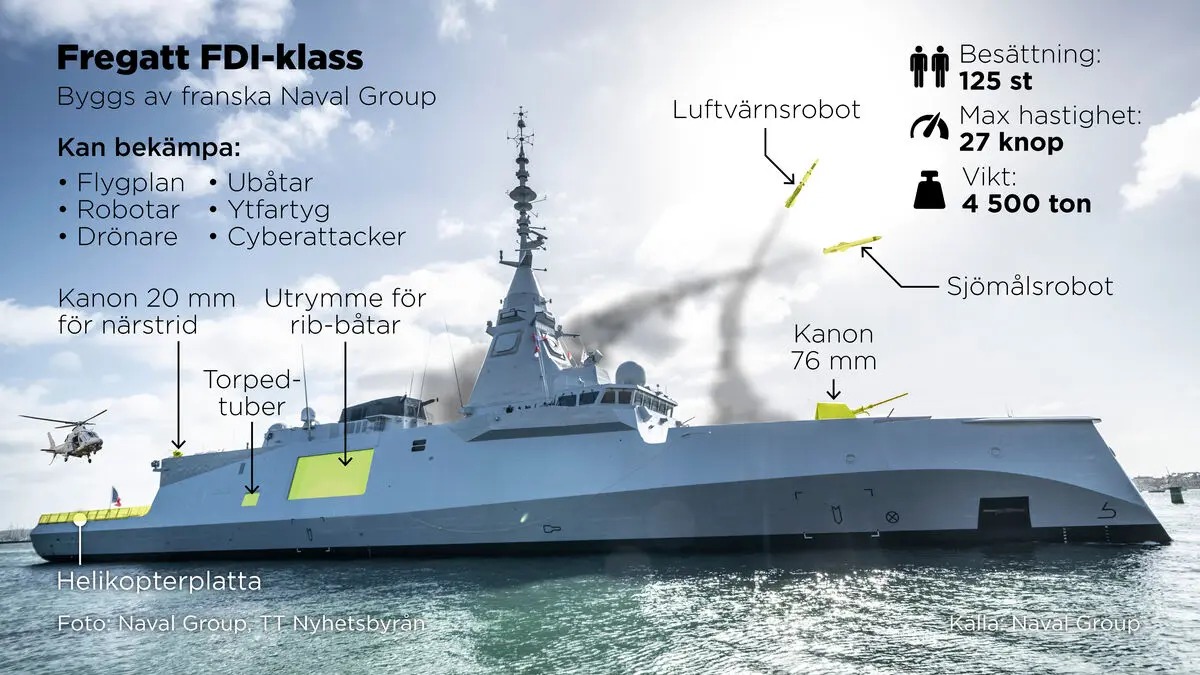The cable breaks in the Baltic Sea have led to a tense situation, and NATO has launched a special operation. Experts and politicians have spoken about the need to view the events in the light of Russia's hybrid war against the West.
The fact is that hundreds of underwater cables are broken in the Baltic Sea every year, according to the Finnish security police – often due to human error, wear and tear, or accidents.
Last Friday, another preliminary investigation into sabotage was initiated after a cable outside Gotland's coast, which connects Germany and Finland, was damaged. We still know very little about the incident, but four incidents where anchors have been dragged long distances along the bottom of the open sea deviate from the normal picture, according to Hans Liwång, professor of defense systems at the Defense University.
If it's a cable break on deep water, it's often trawlers that have caused the damage. Natural anchor incidents occur more frequently near the coast and then in the form of an emergency anchoring, where something has happened on board that makes the crew have no choice, he says.
"Lack of attention and fatigue"
According to Liwång, it is clear that it is the anchors from the suspected vessels that have been dragged along the bottom and caused the damage. It's not something the crew denies, he says. However, the crew does not admit to sabotage in any of the cases.
None of the affected countries have been able to prove sabotage so far.
In one case, the suspicions of sabotage have been dropped, namely the case of the vessel Vezhen, which damaged a cable between Sweden and Latvia at the end of January. In the other three cases, the preliminary investigations are still ongoing.
It is unclear how the anchors could be dragged long distances on the bottom.
If the vessel is well-maintained with a well-trained crew and the circumstances on board are good, then you notice it, says Liwång.
But if there are many disturbing factors or malfunctions on board, such as intoxication or fatigue and everyone is sleeping, then you could very well imagine that a crew does not have the strength or focus to detect this.
"We must be cautious"
If it's about hybrid operations, the idea is that they shouldn't be provable.
It's not certain that we'll ever get an answer to whether the cable breaks were sabotage or not. There's a high risk that several of these investigations won't lead to a conviction, says Liwång.
Ever since the detonations on the Nord Stream gas pipelines in 2022, cable breaks in the Baltic Sea have become more noticed. And Hans Liwång has a warning:
Not everything that's hard to explain comes automatically from Russia. We must be cautious not to link incidents that aren't sabotage to that context, or we risk missing faults and flaws in our own solutions.
The first cable break caused by an anchor occurred in the fall of 2023. Then, a gas pipeline between Finland and Estonia was damaged by the Chinese vessel Newnew Polar Bear. According to China, it was an accident.
In November 2024, another Chinese vessel, Yi Peng 3, is suspected of having damaged two underwater cables in the Baltic Sea. The suspicions have been directed towards Russia.
At Christmas, the tanker Eagle S is suspected of having dragged an anchor tens of kilometers on the seabed and thereby damaging several important cables between Finland and Estonia. Eagle S is flagged on the Cook Islands and is believed to belong to the Russian shadow fleet.
On January 26, a data cable between Latvia and Gotland was damaged by the vessel Vezhen. A Swedish prosecutor dropped the sabotage suspicions about a week later.
The Washington Post reported in January that the cable breaks in the Baltic Sea are not due to Russian sabotage but are likely caused by accidents. The information has been questioned.





